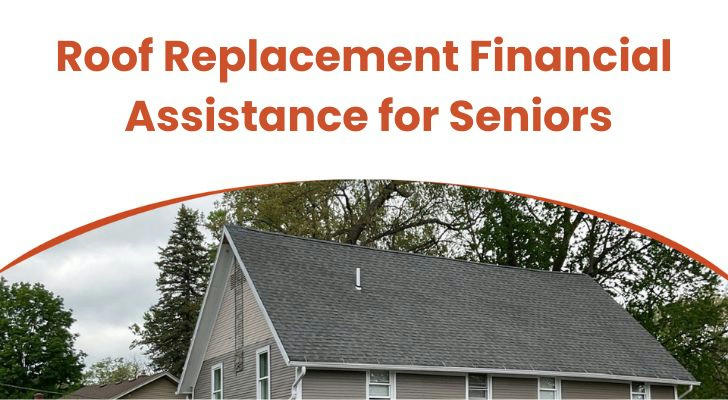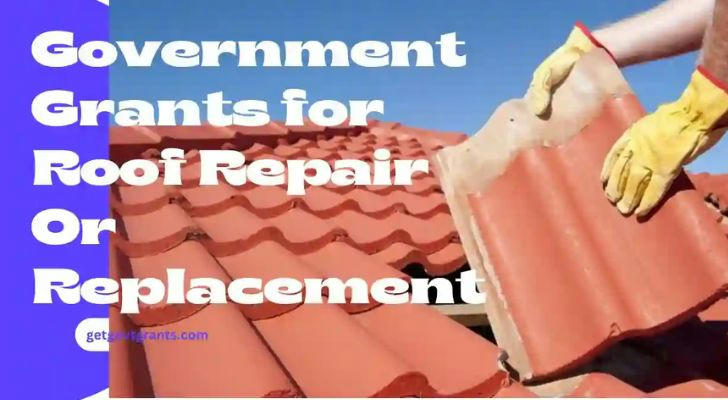U.S. Government Roof Replacement Assistance for Low-Income Seniors in 2025
Roof Replacement Assistance | Weatherization Support | Low-Income Seniors
Many older adults in the United States struggle to maintain safe, energy-efficient homes, especially when aging or damaged roofs cause leaks, drafts, and higher utility expenses. In 2025, several federal and state-level programs provide financial assistance to help seniors with limited income repair or replace deteriorating roofs and improve overall home energy efficiency.

🏠 Federal and State Assistance Programs
1. Weatherization Assistance Program (WAP)
Administered by the U.S. Department of Energy (DOE), the Weatherization Assistance Program helps low-income households reduce energy costs and improve comfort. Assistance may include roof repair or replacement, insulation upgrades, air sealing, and heating or cooling system improvements.
🎯 Eligibility
Priority consideration is typically given to:
- Seniors aged 45 or older
- Persons with disabilities
- Families with dependent children
- Households with high energy use or high energy burdens
Both homeowners and renters may apply. Renters must have landlord authorization for any work completed through the program.
2. Low-Income Home Energy Assistance Program (LIHEAP)
Managed by the U.S. Department of Health and Human Services (HHS), LIHEAP assists qualifying households with home energy expenses. Some states allocate a portion of LIHEAP funds for minor structural improvements, including roof sealing and repair to prevent heat loss and water damage.
Eligibility
- Household income not exceeding 60% of state median income
- Preference for elderly individuals, persons with disabilities, and families with children
Applications are processed through local community action agencies or state energy offices.
3. USDA Section 504 Home Repair Program
The U.S. Department of Agriculture (USDA) provides loans and grants for homeowners in rural areas to remove health and safety hazards. This assistance can include roof replacement or structural reinforcement to ensure safe and energy-efficient living conditions.
- Loans: Up to $40,000 at 1% interest
- Grants: Up to $10,000 for applicants aged 62 or older who are unable to repay a loan
4. Energy Efficient Home Improvement Tax Credit
The federal Energy Efficient Home Improvement Credit allows homeowners to claim a 30% tax credit (up to $1,200) for qualifying energy-efficiency improvements, including roofing materials that meet Energy Star standards for reflectivity and insulation.
🌍 State and Local Weatherization Initiatives
Many states and local governments implement their own home repair and weatherization programs that complement federal initiatives. Examples include:
California: Low-Income Weatherization Program (LIWP)
New York: EmPower+ and Weatherization programs through NYSERDA
Texas: Comprehensive Energy Assistance Program (CEAP)
Minnesota: State Energy Assistance Program (EAP)
Each program determines its own eligibility limits and required documentation.

👵 Age Classification for Applicants Aged 45 and Above
Some programs prioritize applicants by age to determine assistance levels or review order. The following classifications are common in housing and energy efficiency programs:
| Age Range | Description |
|---|---|
| 45–59 years | Eligible for transitional support, particularly for homes with structural or insulation deficiencies. |
| 60–64 years | Typically considered an early-priority group for weatherization and roof repair assistance. |
| 65–74 years | Recognized as the main senior beneficiary group under most programs. |
| 75–84 years | Higher priority for program inclusion; may receive faster processing. |
| 85 years and older | Highest priority level. Certain states offer additional inspections or specialized energy safety assessments. |
Final eligibility depends on state and program criteria.
💰 Estimated Roof Replacement Costs (with Government Assistance)
Roof replacement expenses vary based on home size, roof type, and regional labor costs. The following estimates reflect average 2025 U.S. market prices, adjusted for potential deductions from programs such as WAP, LIHEAP, or USDA Section 504.
| Home Size | Roof Type | Typical Replacement Cost (Before Aid) | Estimated Cost After Assistance* |
|---|---|---|---|
| 1-Bedroom Home | Asphalt shingle | $6,000–$9,000 | $2,500–$4,500 |
| 2-Bedroom Home | Asphalt shingle | $8,000–$11,000 | $3,000–$5,500 |
| 3-Bedroom Home | Composite/metal | $10,000–$14,000 | $4,000–$6,500 |
| 4-Bedroom Home | Composite/metal | $12,000–$17,000 | $5,000–$8,000 |
*These figures assume eligibility for one or more government programs that typically cover 30–60% of total project costs depending on income, location, and property condition.
Notes:
- Costs include labor and disposal of old materials.
- Energy-efficient roofing materials may qualify for an additional federal tax credit.
- Homeowners aged 62 and above in rural areas may access USDA Section 504 Grants to reduce costs.
📋 Application Process
Confirm Eligibility
Review state and federal income guidelines and confirm qualification based on age or disability status.Identify the Appropriate Program
Use the DOE’s or state energy office’s online directory to find the correct local agency.Prepare Documentation
- Proof of income or benefits (e.g., SSI or Social Security)
- Identification and proof of residence
- Recent utility bills or home inspection reports
Submit Application
Applications are accepted through local energy offices, USDA rural development offices, or community action agencies.Await Home Inspection
A certified energy or housing specialist may inspect the property to verify the need for roof replacement.
❓ Frequently Asked Questions (FAQ)
Q1: Can renters qualify for roof assistance?
A: Renters may be eligible if the property owner provides written authorization.
Q2: Are manufactured or mobile homes eligible?
A: Yes. Many state and federal programs include mobile homes, subject to condition and inspection.
Q3: Can multiple programs be combined?
A: Some tax credits can be combined with assistance programs. Coordination policies vary by agency.
Q4: How long does approval take?
A: Processing times typically range from a few weeks to several months after the inspection phase.
Q5: Where to obtain guidance?
A: Support with documentation and application is available through community action agencies or local housing service providers.
